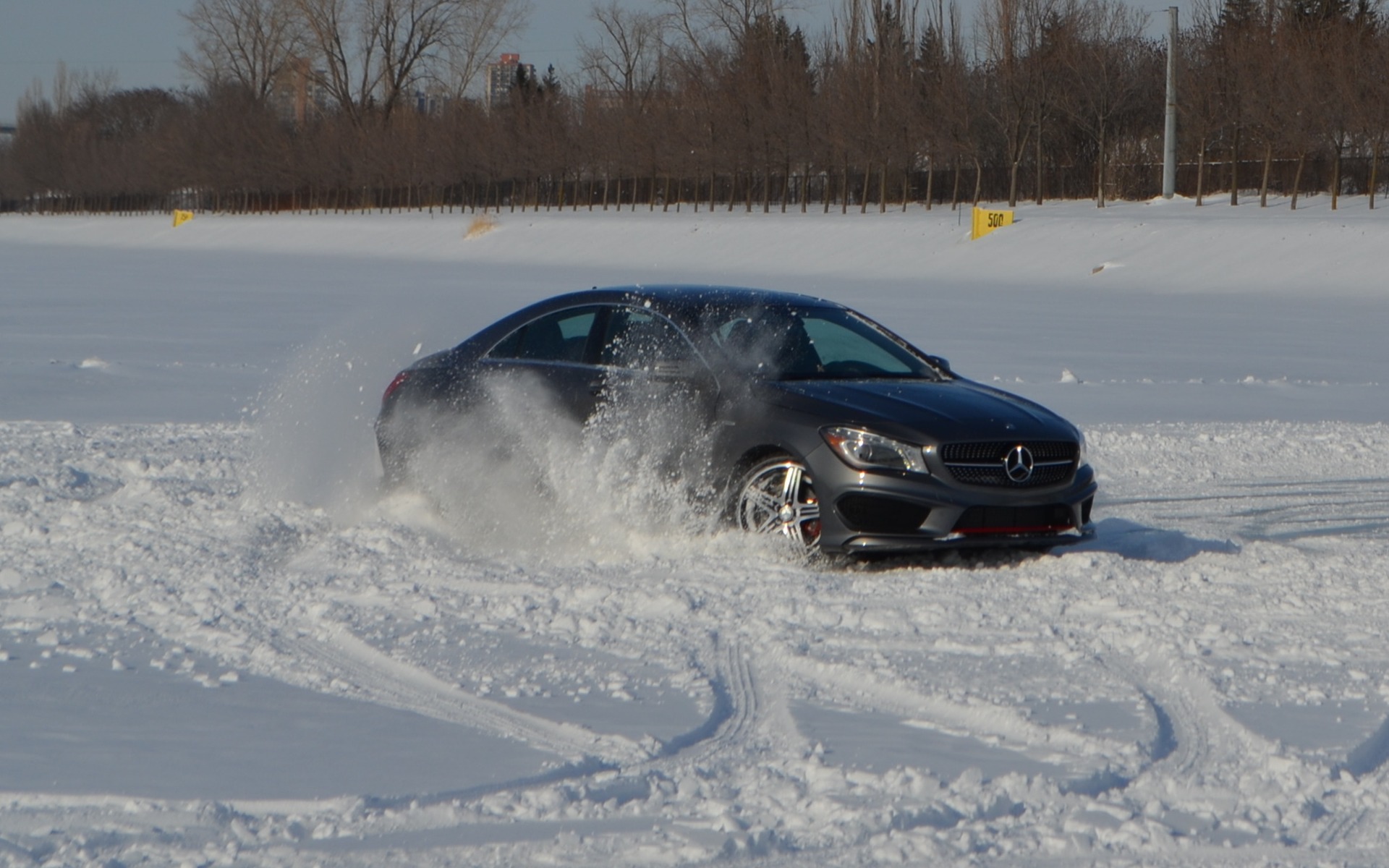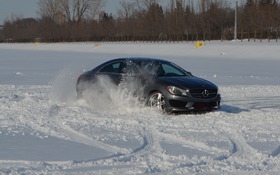Mercedes-Benz Winter Driving Academy
A few days ago, Mercedes-Benz invited a group of automobile journalists to test the new B 250 4Matic and CLA 250 4Matic on the Olympic Basin. Fortunately, it was -30°C, which made the water hard enough for us to have some fun on it. We would have had fun if it was +30°C too, but the cars wouldn’t have been so amused.
So, with the Mercedes-Benz Winter Driving Academy in Montreal, we got the chance to pick the brains of some experts on how to 1) improve our driving and 2) test the limits of the all-wheel drive and various safety systems.
There were three tests on the agenda: braking, slalom, and understeer/oversteer control. It all took place on a perfectly icy surface offering almost no grip whatsoever. At best, the surface was snowy with an icy base.
Braking techniques
There are still some drivers out there who panic when a vibrating brake pedal indicates that the ABS has engaged. Let me tell you that on the Olympic Basin, these people would have ended up needing therapy. While the task looked simple enough—just accelerate and then bring the vehicle to a stop between two cones—the surface was extremely slippery. After a few tries, you learn to ease off a little on the pedal right when your instincts tell you to apply the brakes even harder (which is pointless).
Slalom
Left of the pylon, right of the pylon, left of the pylon, etc. First with the safety systems, then without. And with each drill, you increase the speed. The key is to always keep your eyes on the next cone and not on the one you just passed, or anything else for that matter. After a few turns without the driving aids, you learn to exercise restraint with the accelerator and steering wheel, and the weight transfer is less violent. The car positions itself as long as you don't try to break any land speed records—but that's not the point of the exercise anyway.
Understeer and oversteer drills
It seems almost too easy: drive around a circle. On smooth ice. In cars with all-wheel drive. As with the slalom, everything hinges on the angle of the steering wheel and the pressure on the accelerator. If the front end starts to veer toward the outside of the circle, simply release the accelerator and correct the steering wheel if the tires have turned too far. This will bring the car back in line. If you want to point the front of the car into the circle, give it some gas while turning the wheels back to a neutral position when the circle is in front of you. Ease off on the gas and steering wheel to have the circle in view in front of you. In a vehicle with AWD, you obviously can’t expect to drift like you would with rear-wheel drive. No sweat, right? Don’t kid yourself. My circles looked more like ovals, and some of these ovals, seen from above, must have looked like squares drawn by a two-year old with bad vision.
Good for everyone
Over the last few years, courses like this one have been popping up left, right and centre. Several manufacturers, often high-end ones, offer these courses. And having taking a few of them, I’d say they’re all pretty much the same. You can also to sign up for private courses. In all cases, the instructors are seasoned drivers.
These courses are geared towards anyone and everyone, spanning the entire spectrum from those who just want to be less afraid of the winter to the Ken Block wannabes of the world. There’s even something for race car drivers. Some of the journalists on site at the Olympic Basin are or were race car drivers, and they followed the instructor’s orders like everyone else. Still, it’s strange to think that people with 30 years of professional driving experience under their belts were all ears when the instructors were talking. This sort of course also teaches us not to be overconfident in winter, regardless of whether our car is equipped with the best all-wheel drive or safety systems. The key is to remain vigilant and never go beyond your limits. And believe you me, drivers usually reach their limits long before the cars reach theirs.
$$$$
These courses aren't free. The Mercedes-Benz Winter Driving Academy will run you $795. On the other hand, for that price you get more practice hours and more exercises than we had. BMW offers what is ostensibly the same program at the same price. Porsche, with its Camp4, has a longer, more complete course but it also costs more. Among the "private" courses, there's the half-day session run by former race car driver Claude Bourbonnais in Vaudreuil (Lake of Two Mountains) at a very reasonable price, not to mention others like Mécaglisse in Notre-Dame-de-la-Merci and ICAR in Mirabel.
This kind of course won’t prepare you for the Andros Ice Racing Championship. However, understanding why a car skids can help you adjust your driving style according to road conditions. Moreover, these courses help you understand how to control your car when your tires lose traction.
Which brings me to a question that I’ve been wondering for a long time: With the seemingly interminable winters we have in Canada, why aren’t these courses mandatory?












